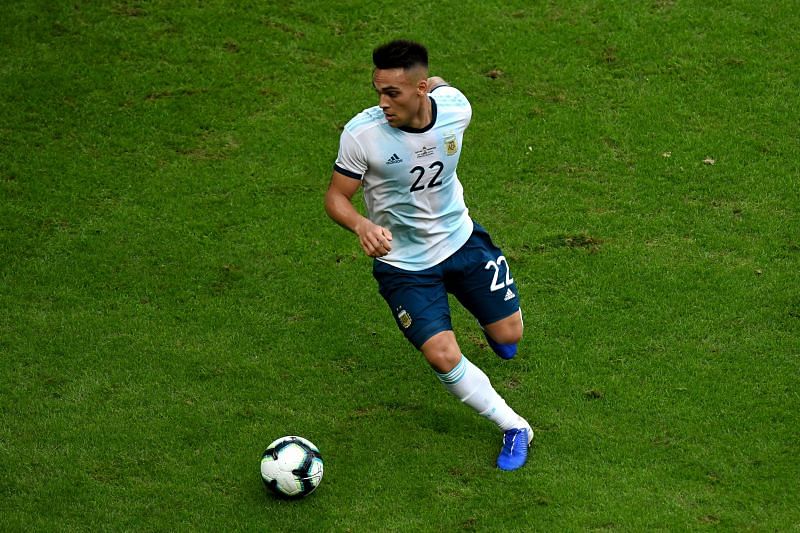
What is the ideal formation for Lionel Messi's Argentina?
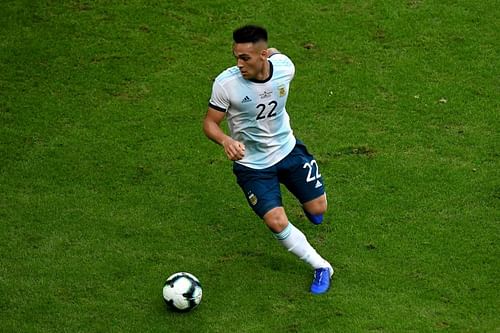
Considering the plethora of attacking riches at Argentina's disposal, their ideal formation has always been a hotly contested topic in the football world. Lionel Messi's Argentina have played in most modern formations but with varying degrees of success.
Former Argentina manager Jorge Sampaoli struggled to find the right balance in his team as the two-time champions exited the 2018 FIFA World Cup in Russia. In a Round of 16 game where they led 2-1, Argentina eventually fell to a 3-4 defeat against eventual champions France.
Perhaps the most damning sight for all Argentina fans in that match was one of Paulo Dybala sitting on the bench while the likes of Marcos Acuna and Maximiliano Meza struggled in vain to conjure decent openings.
Argentina's tactical approach in the 2018 World Cup
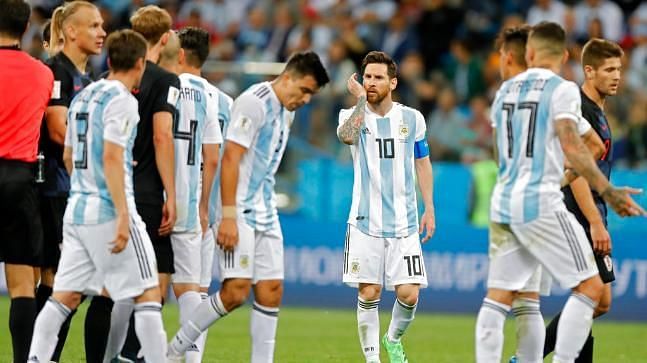
Argentina made a torrid start to their 2018 FIFA World Cup campaign. With captain Lionel Messi missing a spot-kick, the 1978 and 1986 World Champions were held to a disappointing 1-1 draw in Moscow by tournament debutants Iceland. It was the first time in over three decades that Argentina failed to win their World Cup opener.
The Albiceleste's underwhelming performance against Iceland was only a precursor of things to come. Argentina crashed to a humiliating 0-3 defeat to Croatia in their second group-stage game in Nizhny Novgorod.
It was their worst defeat at a World Cup since losing 1-6 to Czechoslovakia in 1958 as it also marked the first time since 1974 Argentina failed to win their opening two matches at the quadrennial tournament.
Lionel Messi scored the 100th goal at the 2018 World Cup to open the scoring for Argentina against Nigeria in St. Petersburg. However, Argentina's failure to build on their lead came back to haunt them when Nigeria levelled proceedings in the second half.
On the cusp of an ignominious group-stage exit, Argentina flocked forward in numbers and were indebted to defender Marcos Rojo's 86th-minute winner that saved the blushes for the South American giants.
In the blockbuster Round of 16 tie against France, Argentina fell behind but took a surprise lead. However, Argentina's familiar problems came to the fore as the 1998 world champions scored thrice to effectively end the game as a contest.
Throughout the tournament, Sampaoli looked like a confused man, unable to find out the right system for an Argentina team boasting a rich array of attacking talent in Lionel Messi, Sergio Aguero, Angel di Maria and Paolo Dybala among others.
For instance, in the second group stage game against Croatia, Sampaoli opted for a 3-5-2 formation, but Lionel Messi's Argentina were humiliated 3-0.
The problem with a 3-5-2 formation in a team containing Lionel Messi is that it restricts the diminutive Argentinian's options out wide. At Barcelona, Lionel Messi enjoyed his most fertile spells when he could combine with full-back Dani Alves on the right flank.
After the departure of the Brazilian and with Barcelona lacking a decent right-back, Lionel Messi increasingly sought the width provided by Jordi Alba on the left flank.
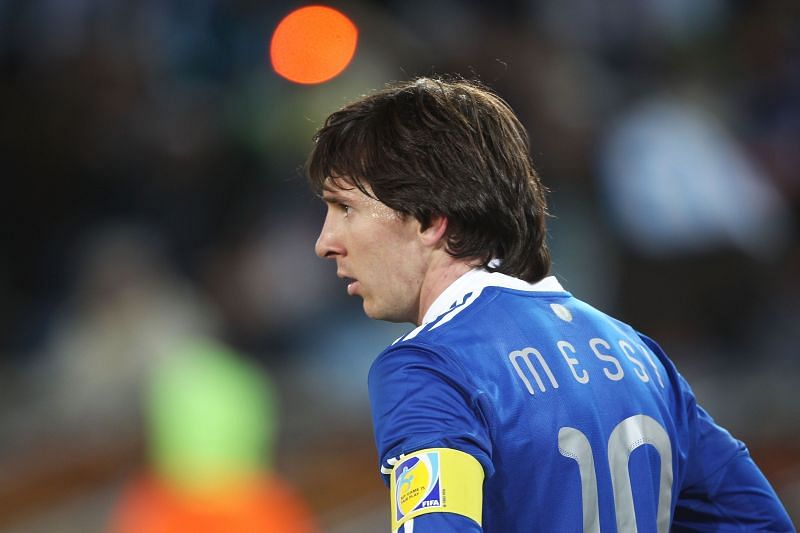
We must remember that Lionel Messi is the fulcrum of the Argentina team, or what is known as an enganche in Argentinian football; like a hook, a player who connects the midfield with the attack. Of course Lionel Messi began his career as a right-wing forward, but he has improvised his game over the years to suit his team's requirement.
Argentina's 3-5-2 formation had its heyday during the 1980s and early 1990s under the tutelage of legendary manager Marcelo Bielsa. It was also seen during Bielsa's tenure at Newell's Old Boys.
Bielsa used the 3-5-2 formation successfully, but it was Carlos Bilardo who used it to superb effect, winning Argentina the 1986 World Cup in Mexico using that system.
At the 2018 World Cup, however, Sampaoli used various formations as he looked to find the right system for his star-studded team. He used a 4-3-3 in the first match, a 3-5-2 in the second, and employed a 4-2-3-1 in the must-win game against Nigeria.
Also check out: Messi vs Ronaldo complete stats
How have Argentina fared in a 4-3-3 formation?
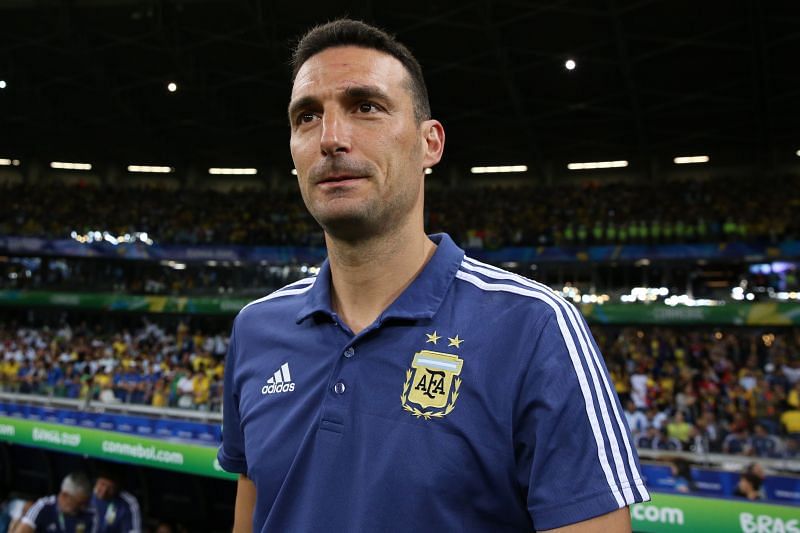
The most tempting formation for Argentina would obviously be a 4-3-3, considering the bevvy of attacking players in their roster.
Extensively tried and tested, it is a formation consisting of three forward players backed by two creative midfielders that allows a team both width and depth. The defensive midfielder, often the most overlooked player in any team, is perhaps the most important one in a 4-3-3 for the effective functioning of this system.
Argentina used a 34-year-old Javier Mascherano in a defensive midfield role in their 4-3-3 formation at the 2018 World Cup. Needless to say, it was an unmitigated disaster as the former Liverpool and Barcelona player has never been good enough in that position.
Yes, he was indeed deployed in that position during his time at Anfield, along with a certain Xabi Alonso, but with age and time, the Argentina player is far from the best player for that position. Leandro Paredes could have done a better job as a defensive midfielder than Mascherano. Instead, it would have been better to deploy Mascherano as one of the centre-backs.
Another problem with the 4-3-3 for Argentina is that they do not have quality wingers. If Lionel Messi plays on the right, nobody seems to be able to create anything from the middle. Even if one puts Ever Banega there, the left-wing position remains a weak-link for Argentina.
On many occasions, Angel Di Maria was put on the left for the Albiceleste, but that is hardly his best position. Similarly, Paulo Dybala is best deployed as a second striker, but doing so would severely inhibit the efficacy of Argentina's 4-3-3.
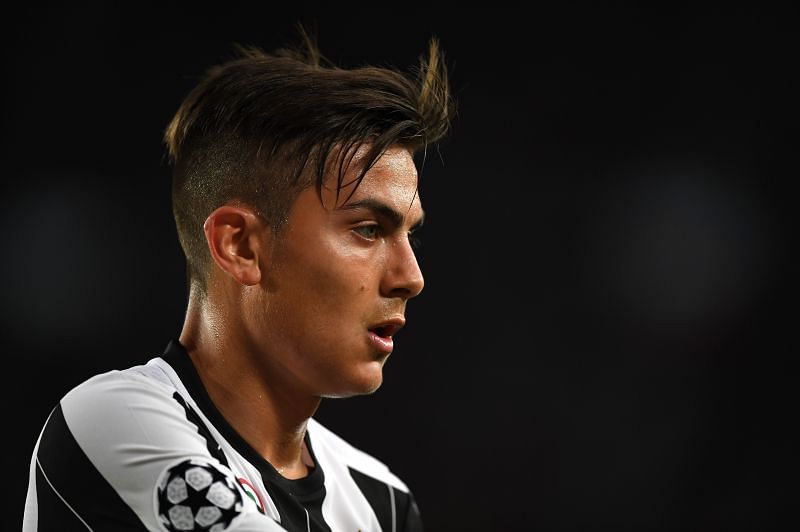
The only ways how Dybala can be accommodated in the Argentina playing XI would be to play him as a central striker or on the right-wing. However, this would then complicate Lionel Messi's role in the team as he would have to either drop into an attacking midfield role or drift towards the left.
Does the 4-4-2 formation work for Argentina?
With the current Argentina squad, the 4-4-2 is a much more viable option. Put Sergio Aguero and Gonzalo Higuain up front with Paredes and Banega as the two midfield pivots. Lionel Messi can be deployed on the right-wing and Di Maria on the left.
However, the obvious problem with the 4-4-2 for Argentina is that neither Lionel Messi nor Di Maria are midfielders, or at least not midfielders in a 4-4-2. Di Maria has a reduced efficacy on the left-hand side. In the left-midfield position, Di Maria is wasted as he does not get the opportunity to make use of his full repertoire of skills.
Similarly, any coach would want Lionel Messi in a more advanced position, and the right midfield is not his preferred position anyway. The only merit in this formation is that it allows Argentina to use both their strikers, while also having Lionel Messi, Di Maria and Ever Banega on the pitch.
The 4-4-2 formation also allows Argentina's defensive full-backs to combine with their wide midfielders. Overall, it's a good formation, but it does not make optimum use of the wealth of resources Argentina have at their disposal.
Is 4-3-1-2 the best formation for Lionel Messi's Argentina?
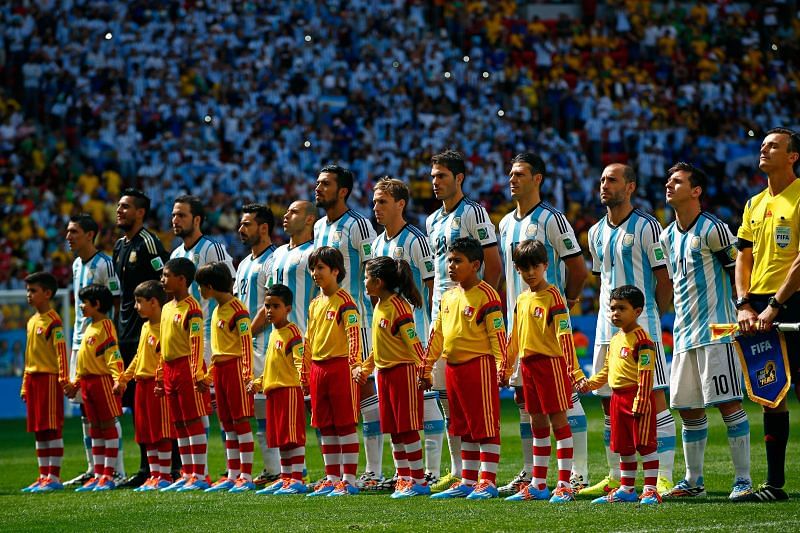
The 4-3-1-2 formation has been previously successful for Argentina during the era of Juan Roman Riquelme, who epitomised the Classic No. 10 role, a dying breed in world football, with Mesut Ozil being one of its few exponents. Yet the German international has always been criticised by Arsenal fans for being too slow and sluggish.
That is because by nature, the Classic No. 10 is a placid and ponderous player, whose attacking contribution in the team mitigates his defensive responsibilities. Such players need the protection of a strong backline to let them thrive and express themselves. Teams with this formation also need strong physically imposing players to break up the opposition build-up play.
Lionel Messi is an ideal player for this role. What makes Lionel Messi devastating as a number 10 is that unlike Ozil or other classic number 10s, his decision-making is quick. Besides, Lionel Messi possesses the dribbling ability to squeeze out of tight spaces. He can play in behind two central strikers, preferably Sergio Aguero and Lautaro Martinez.
Leandro Paredes can be the much-needed strong central defensive midfielder, while Giovanni Lo Celso and Rodrigo de Paul can be the holding midfielders. This is actually quite an impressive line-up. When Lionel Messi gets tired, he can be replaced by Paulo Dybala, or both Lionel Messi and La Joya can play together, making it a 4-2-2-2 system, with Lo Celso making way for Dybala.
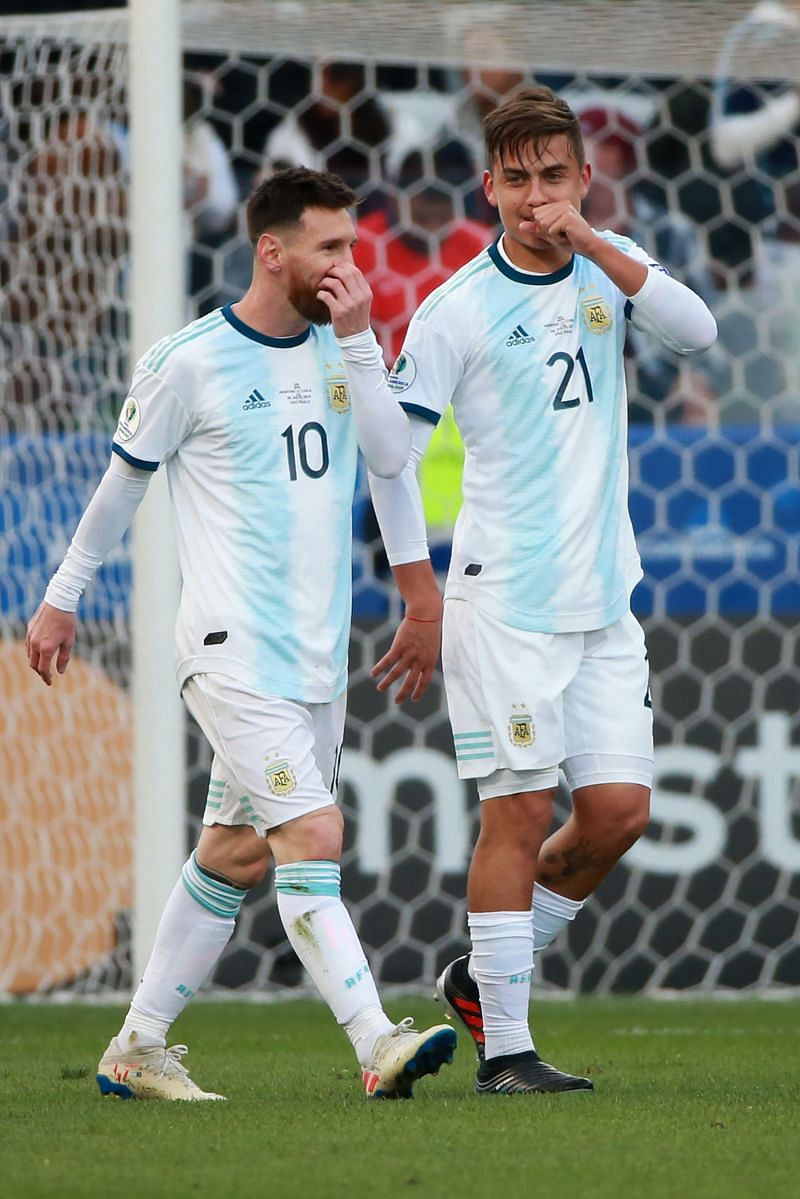
The only downside to the 4-3-1-2 system is that it is too narrow. But with the young left-back Nicolas Tagliafico and the 27-year-old Renzo Saravia at right-back providing width from the flanks, this formation could work quite well for Argentina. But of course, the Albiceleste also need to improve their defence as no system works if a team leaks goals at the back.
The 2022 FIFA World Cup is still far away, which gives Argentina manager Lionel Scaloni ample time to tweak his tactics. As Lionel Messi approaches the end of his illustrious career, La Albiceleste fans will surely want him to end on a high.